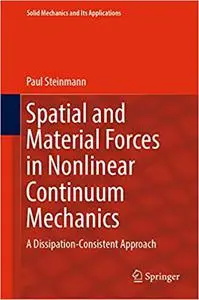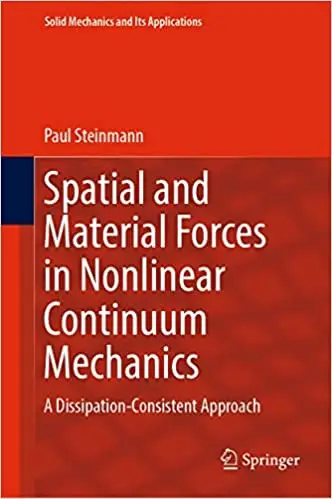Spatial and Material Forces in Nonlinear Continuum Mechanics
by Paul Steinmann
English | 2022 | ISBN: 3030890694 | 418 pages | True PDF EPUB | 61.13 MB
by Paul Steinmann
English | 2022 | ISBN: 3030890694 | 418 pages | True PDF EPUB | 61.13 MB
This monograph details spatial and material vistas on non-linear continuum mechanics in a dissipation-consistent approach. Thereby, the spatial vista renders the common approach to nonlinear continuum mechanics and corresponding spatial forces, whereas the material vista elaborates on configurational mechanics and corresponding material or rather configurational forces. Fundamental to configurational mechanics is the concept of force. In analytical mechanics, force is a derived object that is power conjugate to changes of generalised coordinates. For a continuum body, these are typically the spatial positions of its continuum points. However, if in agreement with the second law, continuum points, e.g. on the boundary, may also change their material positions. Configurational forces are then power conjugate to these configurational changes. A paradigm is a crack tip, i.e. a singular part of the boundary changing its position during crack propagation, with the related configurational force, typically the J-integral, driving its evolution, thereby consuming power, typically expressed as the energy release rate. Taken together, configurational mechanics is an unconventional branch of continuum physics rationalising and unifying the tendency of a continuum body to change its material configuration. It is thus the ideal formulation to tackle sophisticated problems in continuum defect mechanics. Configurational mechanics is entirely free of restrictions regarding geometrical and constitutive nonlinearities and offers an accompanying versatile computational approach to continuum defect mechanics. In this monograph, I present a detailed summary account of my approach towards configurational mechanics, thereby fostering my view that configurational forces are indeed dissipation-consistent to configurational changes.



